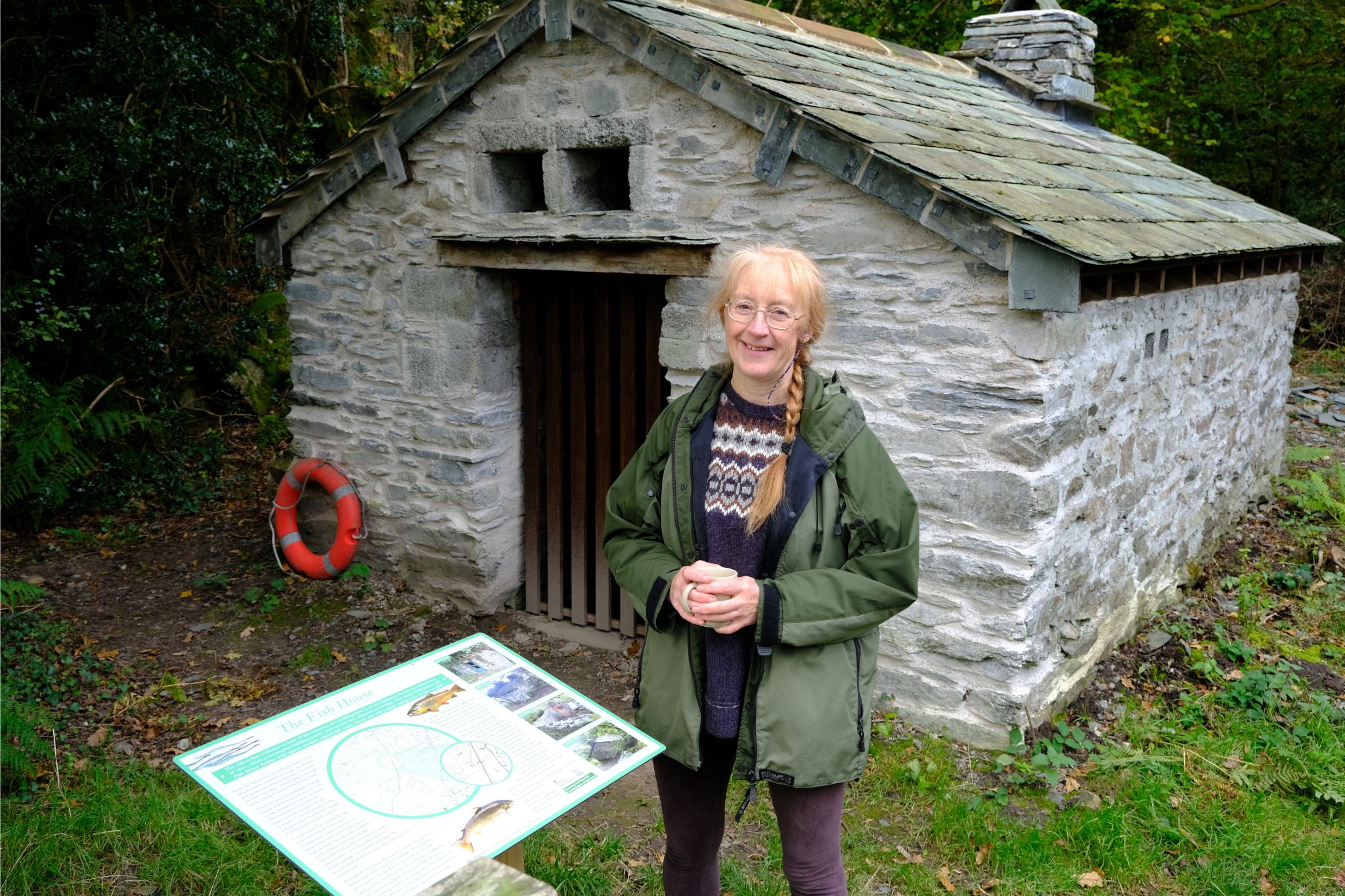
Funding through Farming in Protected Landscapes (FiPL) allowed for repairs and restoration at the Fish House in Black Beck Wood.
A centuries-old building located in Black Beck Wood, Rusland has been restored thanks to funding through Farming in Protected Landscapes (FiPL), which provides funding for Lake District farmers and landowners to deliver projects for climate, nature, people and place.
The stone house was derelict when Edward and Pam Mills undertook some detective work, and learnt they owned a rare Fish House.
It sits on the edge of an ancient woodland, next to Fish House Bridge, which crosses a tidal river, the Rusland Pool.
The Fish House, which could be more than 200 years old, is the only known surviving Fish House in South Lakeland. It was in danger of becoming a complete ruin.
However, thanks to a FiPL grant of £7,090, it was repaired using traditional building methods.
A new roof was put on the Fish House using existing roof slates, where viable, and local, second-hand slates were found to finish the task.
A collapsed wall was rebuilt, repointing was carried out and a new, tamper-proof, door was made and hung.
Speaking about the building’s mysterious history, Pam said: “The oldest evidence we have of the existence of a building here is on the Ordnance Survey 1st edition map of 1851. We can see a rectangular building on this site, adjacent to a bridge. The names Fish House and Fish House Bridge only appear on later edition OS maps.
“There would have been plentiful fish to catch here in the past: eels, salmon and sea trout. Perhaps fishermen stored fishing nets, stakes and creels here. They may have used the building to smoke the fish, or as a base to sell fish and other goods to locals and passing merchants using either the tidal river or the route across the bridge. No doubt it has also been used as a place to warm up and have a brew.”
Further research by Pam and local discussion suggests that the Fish House may have started life as a tollhouse. This could explain why, although small, the building is made of stone. Tollhouses were used to collect money from those using routes newly improved at the time of the Turnpike Acts in operation between the late 17th century and the 1870s.
The Fish House sits on what is now a public footpath. In the 1800s it may well have been the main trading route between Bouth, then an important centre of trade with five inns, and Kendal. It would also have been on the route of a daily commute by workers and children to school or to the Blackbeck Gunpowder works.
Today it’s popular with people exploring the area. An information panel which has been erected as part of the FiPL grant means the story of this delightful and special building can now be told and the questions it still raises, shared.
Eliza Hodgson, Farming Officer for Lake District National Park, said: “Restoring this rare Fish House ensures an iconic piece of the landscape remains for years to come.
“This is particularly important as another fish house in the area, also found on old maps, hasn’t survived, making this the only one in the area.
“Historic buildings are an important part of the Lake District’s cultural landscape, and one of the reasons it is a UNESCO World Heritage Site.
“Restoring this Fish House has also helped to keep traditional building skills alive which are in danger of being forgotten.”

